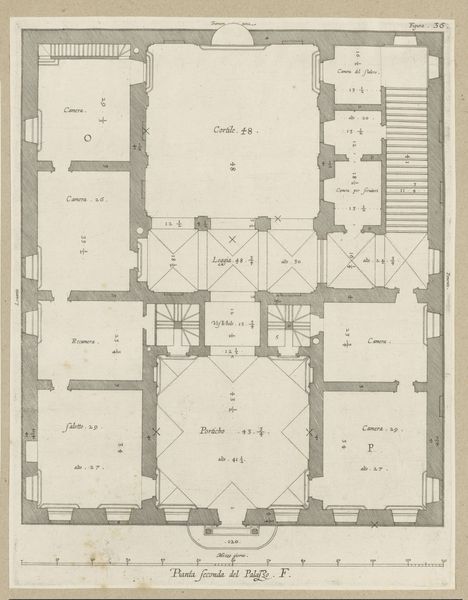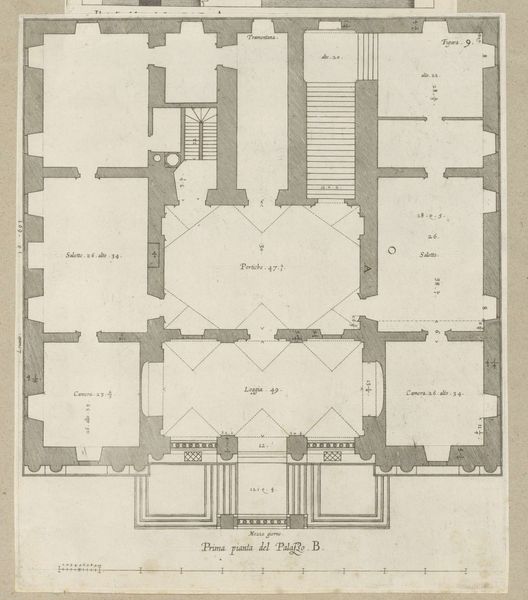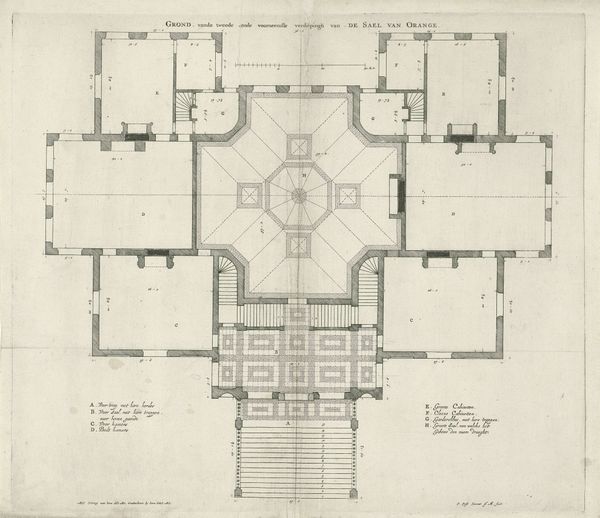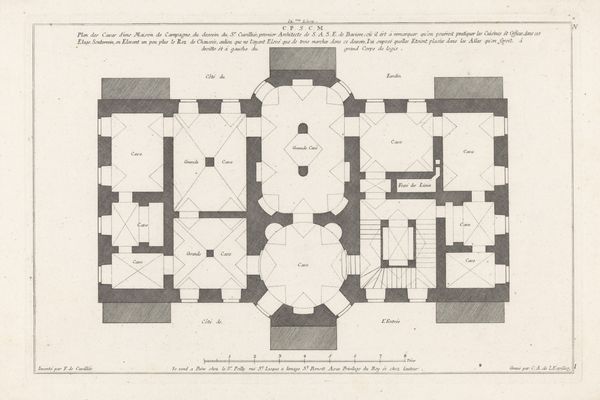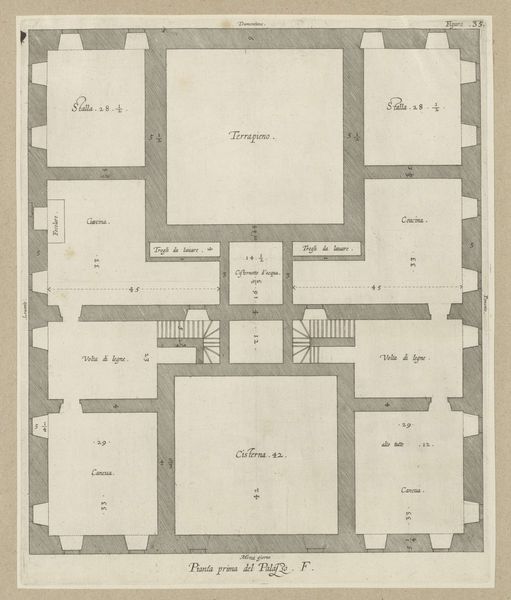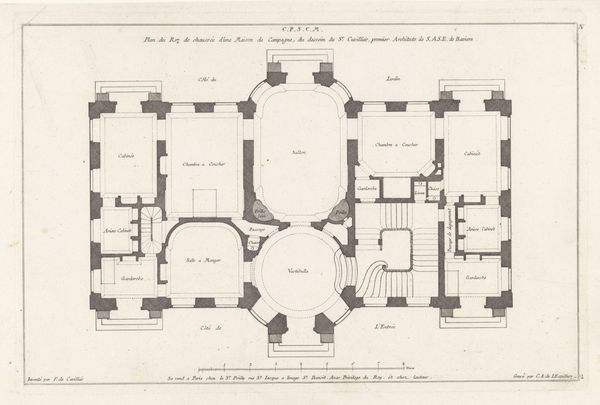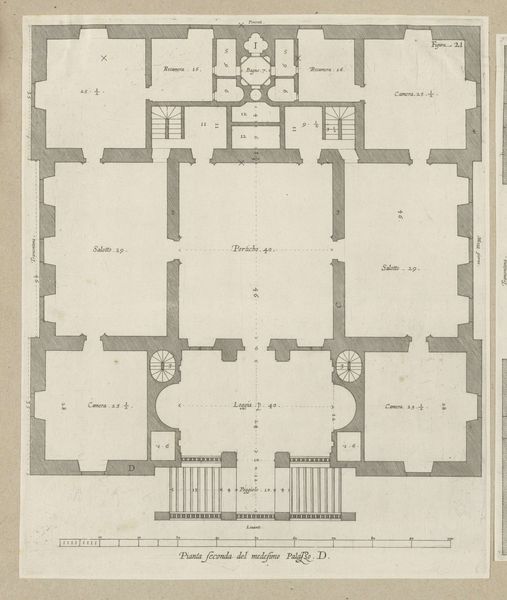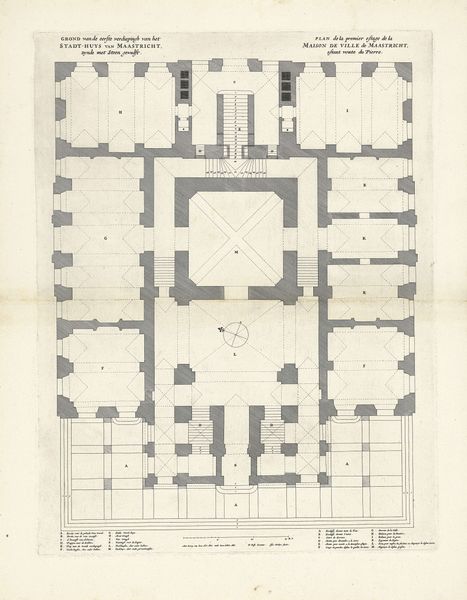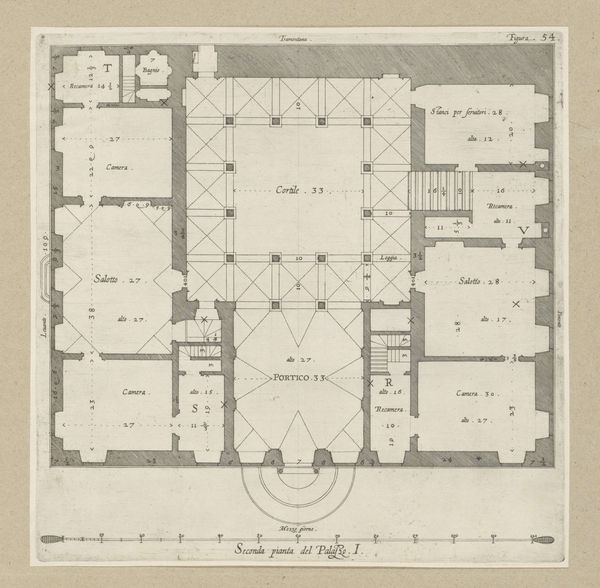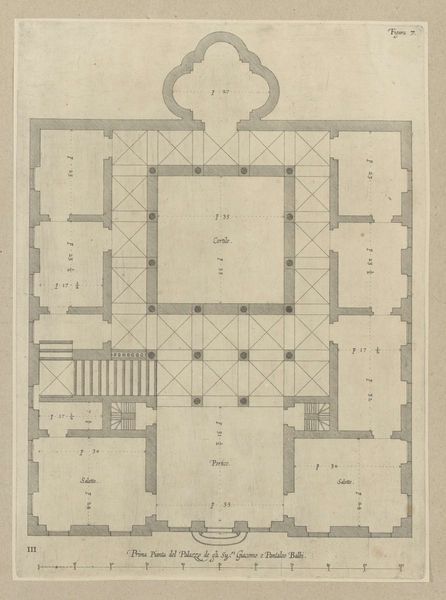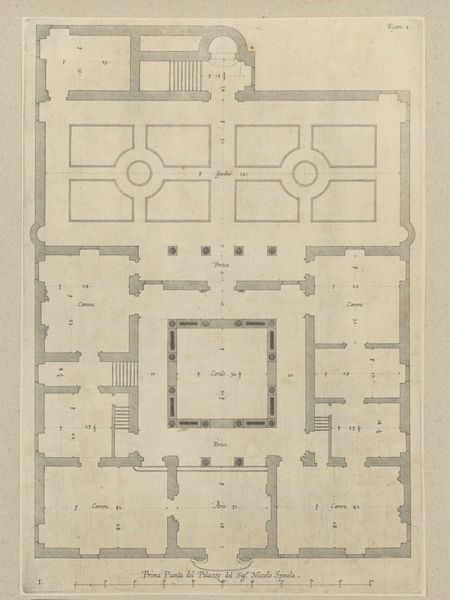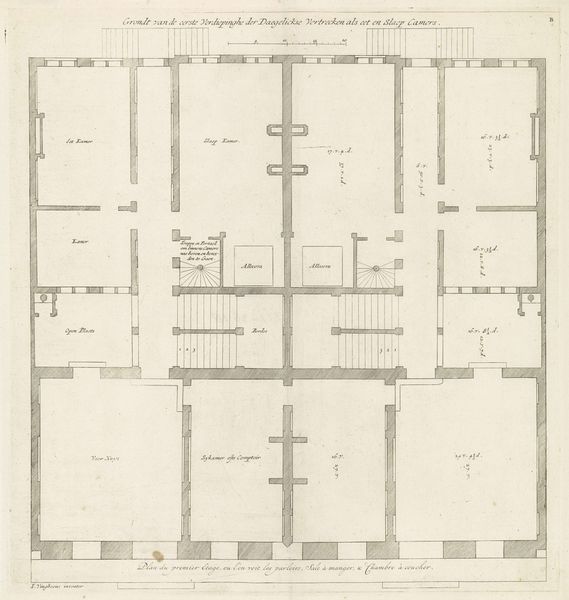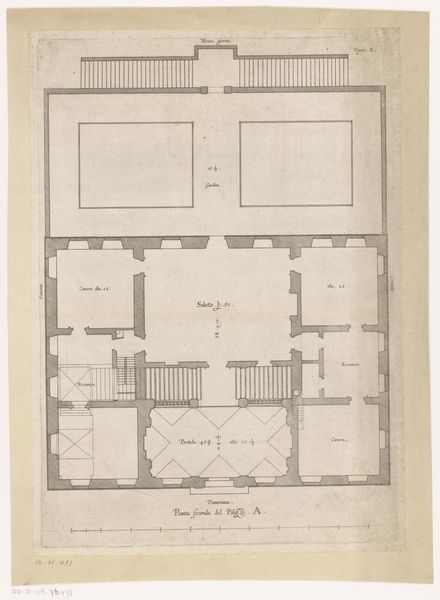
drawing, paper, engraving, architecture
#
drawing
#
neoclacissism
#
paper
#
form
#
line
#
cityscape
#
engraving
#
architecture
#
building
Dimensions: height 366 mm, width 228 mm
Copyright: Rijks Museum: Open Domain
Curator: Jean François de Neufforge created this piece, titled "Facade en plattegrond," around 1760. It resides at the Rijksmuseum, executed as a drawing and engraving on paper. Editor: The piece strikes me immediately with its precise linearity. There's something incredibly balanced and almost utopian about it, like a perfectly ordered dream of domesticity. Curator: Precisely. The Neoclassical style emphasized order, reason, and a return to classical forms. What you see here is not just an architectural rendering but an idealized vision of a building and its relationship to its surroundings. Consider the social implications: this design aesthetic projected an image of stability and control, vital in a period of considerable social and political change. Editor: And what of the iconography within the layout? The shapes of the rooms and how they connect—does that suggest anything about the lives lived within? I am interested in the contrast between the formal, almost public rooms near the entrance, and the more intimate spaces further within. What's the significance? Curator: It's all very deliberate. The "Salle de compagnie" and "Salon" were for receiving guests, public displays. The more private "Chambre a Coucher," implies the negotiation of public versus private life, crucial to understanding the 18th-century aristocratic lifestyle. Think about the symbolic value of that circular “peristyle,” a very dominant area of that lower level, that provides the residents an area of escape into nature. It is this mixture of styles in this image that reflects Neufforge's interest in using the styles for modern uses. Editor: The architecture becomes a stage, in that regard, where people acted out prescribed roles, shaped by design and social expectation. But that ideal feels so controlled—almost suffocating. Are we meant to feel admiration or perhaps a sense of unease? Curator: It’s complex. The aesthetic embodies Enlightenment ideals, promoting rationality, clarity, and a sense of civic virtue. Yet, these grand designs also underscore social stratification and power imbalances that fueled the coming revolutions. Editor: Seeing how the design anticipates and, in a sense, dictates behavior certainly provides much to consider about our ongoing dialogue between structure and agency. Thank you. Curator: An excellent point, which perfectly exemplifies the interplay between our historical context and inherent symbolic structures.
Comments
No comments
Be the first to comment and join the conversation on the ultimate creative platform.
